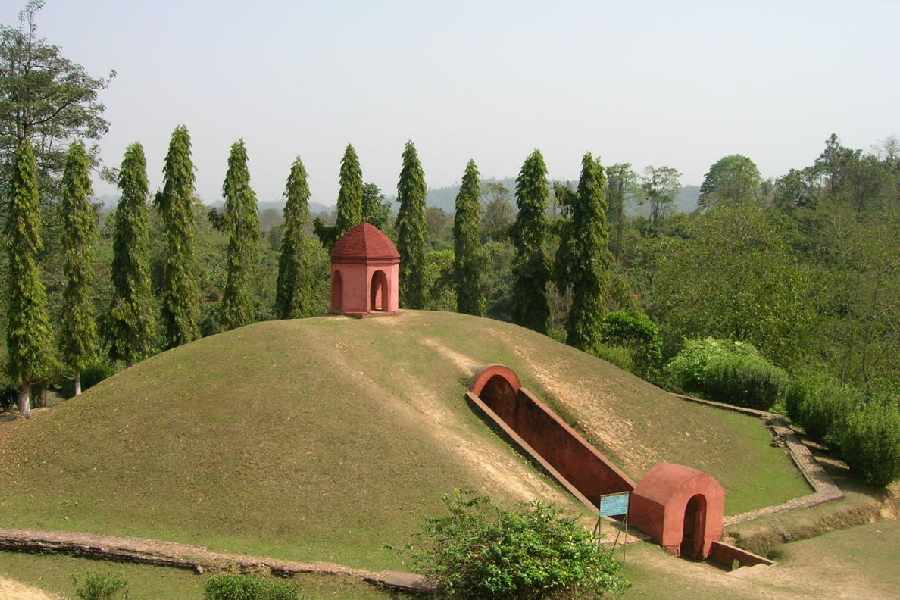Ahom era “Moidams”, the resting place for royal families in Assam’s Charaideo district, have been recommended for inclusion in the Unesco World Heritage List by its international advisory body — the International Council on Monuments and Sites (ICOMOS).
ICOMOS has prepared a report, Evaluations of Nominations of Cultural and Mixed Properties, for the 46th ordinary session of the World Heritage Committee, to be held in New Delhi from July 21 to 31.
The report, which PTI has accessed, evaluated a total of 36 nominations, including 19 new ones, received from across the globe and the Ahom Moidam was the only applicant from India.
“ICOMOS recommends that Moidams — the Mound-Burial System of the Ahom dynasty, India, be inscribed on the World Heritage List on the basis of criteria (iii) and (iv),” it said.
With this recommendation, first-time applicant Moidams are just one step short of formally entering the World Heritage List by the United Nations Educational, Scientific and Cultural Organization (Unesco). These were first included in the Tentative List in April 2014.
France-based ICOMOS, also an advisory body to Unesco for cultural heritage, is an international non-governmental organisation comprised of professionals, experts and representatives from local authorities, companies and heritage organisations and is dedicated to the conservation and enhancement of the architectural and landscape heritage throughout the world.
Inclusion of Moidams in the World Heritage List was sought by the Indian government on the basis of Cultural Criteria (iii), (iv) and (v). The nominated property has an area of 95.02 hectares and a buffer zone of 754.511 hectares.
Criterion (iii) bears a unique or at least exceptional testimony to a cultural tradition or to a civilisation which is living or which has disappeared and criterion (iv) is for an outstanding example of a type of building, architectural or technological ensemble or landscape which illustrates significant stages in human history.
Criterion (v), which ICOMOS rejected, is for an outstanding example of a traditional human settlement, land use or sea use which is representative of a culture or human interaction with the environment, especially when it has become vulnerable under the impact of irreversible change.
The report stated that 90 Moidams exist within the Charaideo necropolis, situated on elevated land. These were created by building an earth mound over a hollow vault constructed of brick, stone or earth and topped by a shrine at the centre of an octagonal wall.
The Moidams situated in Charaideo are the burial grounds of Ahom kings and queens. These are comparable to the pyramids of Egypt and are substances of wonder seen through the brilliant architecture and expertise of the artsmen and masons of Assam of the medieval era.
“ICOMOS considers that the nominated property demonstrates 600 years of Tai-Ahom traditions at Charaideo. ICOMOS considers that the nominated property is an exceptional example of a Tai-Ahom necropolis that represents in a tangible way their funerary traditions and associated cosmologies,” the report said.
It highlighted that the conditions of “integrity and authenticity’ of the property have been met. There are no inhabitants within the nominated property and approximately 4,017 inhabitants live in the buffer zone.

